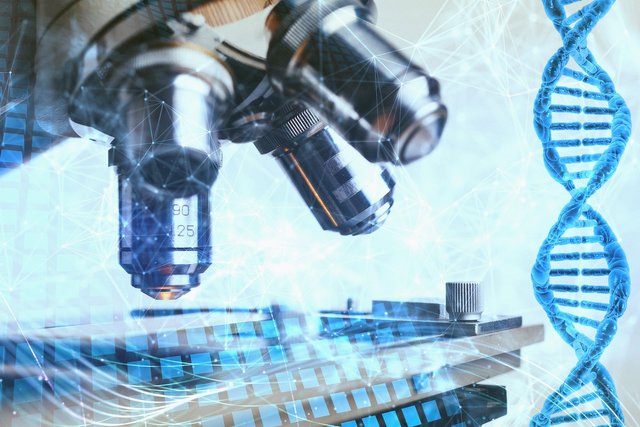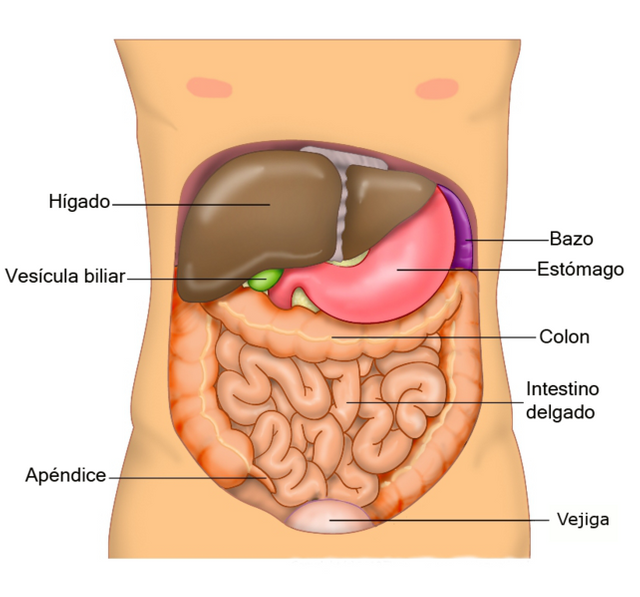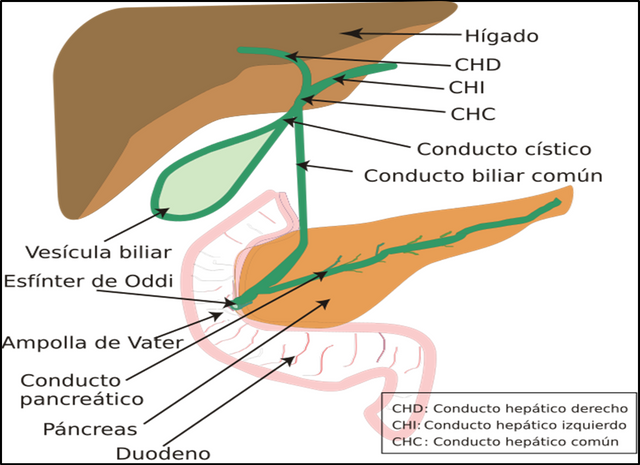BIOCHEMICAL ACCESSORIES AND THEIR IMPLICATIONS IN DIGESTIVE PROCESSES

Author: @madridbg, via Power Point 2010, using public domain images.. Victoria Model
Greetings and welcome dear readers, back with the contents associated with the scientific character, in this installment we will be addressing the metabolic origin accessories that play a major role in the digestive process, content that we will share through the community #projecthope.
At this point, it is necessary to understand that the digestive system is assumed as that conglomerate or set of organs that are in charge of processing food, so that they break it down into simpler substances that our body requires for obtaining energy and its functioning.
Likewise, it is necessary to take into account that at a conceptual level, an accessory is a tool or instrument that is added to or forms part of a larger or main item and that fulfills specific and determining functions in its operation.
In this sense, when talking about digestive accessories, we must make mention and focus our attention on the most important of these, talking about the liver, since on it fall various functions, so that they are assumed as a great chemical laboratory within our body. If we evaluate its behavior, we must know that it is located in the upper right part of the abdomen, without forgetting that it is the organ with the largest volume in the human body, so we are talking about a gland that processes the different substances that enter our body.

Representation of the Digestive System. Author: Tvanbr
As for its appearance, it has a vinotint coloration, product of the great confluence of blood that falls on it, besides it has the segregation of bile that is responsible for the splitting of lipids, without forgetting the protein synthesis that fulfill plasma functions. The support of this digestive accessory is due in the first instance to the blood vessels present, as well as to the extra peritoneal layer, known as Glisson's capsule.
Generally speaking, the liver has a compact and complex structure, which allows it to perform the functions of a bank of the organism, since it administers the indispensable resources that allow the ideal functioning at a metabolic level, specifically controlling the quantities of vitamins, fats and glycogen necessary for our organism.
Thus, when resources are required, it releases them gradually so that the respective reaction and synthesis can occur; however, when a surplus of these resources is noticed, the liver is able to remove them from the bloodstream and store them as a reserve mechanism. Likewise, the liver fulfills maintenance functions, since it eliminates toxic substances and those that require metabolization, as is the case of ammonia, which is sent to the excretory tract.
Another of the accessories of the digestive system is the gall bladder, its location is below that of the liver, its appearance in the form of a bag allows to store the bile secreted by the liver, which as a yellowish liquid stored, plays an important role, since it is able to exert functions as emulsifiers, dissolving the fats in the water, product of the hydrophilic and hydrophobic characteristics of the bile salts, in other words that a part of the molecule presents affinity with the water, while the other repels it, thus generating micelles that encapsulate the lipid droplets that are transformed into aqueous media in the bloodstream or lymph.

Representation of the biliary system. Author: Vishnu2011
We can also find the pancreas, which being a gland, represents another of the accessories of the digestive system, it releases pancreatic juice and initiates the activation of the system, thus raising the hydrogen potential (pH) of the chyme, so that the acidity produced in the degradation of food does not affect the enzymes, generating a neutral environment which is the point where it has been demonstrated that a greater efficiency of the enzymes in their different functions is achieved.
With respect to its location, it is located in the posterior part of the stomach presenting a shape similar to the abdominal salivary glands. Consequently, the glands that make up the digestive system are shared as accessories that make it more efficient as they improve the conditions for the enzymatic activity itself, without forgetting that they are able to process and transform the food we eat into substances of higher energy value to our body, in order to keep us active.
FINAL CONSIDERATIONS

Undoubtedly the human body and the metabolic systems that are executed on it, fulfill functions of specificity and excellence, which have been geared in a millimetric way to fulfill specific functions in our body, an aspect that is reflected in the functions of the glands that we have called digestive accessories, which perform an action that allows to maintain the order and functioning of our body.
Consequently, knowing these aspects allows us to value the functions of each organ and respect them, since we are what we consume and according to our diet we can contribute to the efficiency or disorder of the metabolic functions.
BIBLIOGRAPHY CONSULTED

[1] Barcelona College of Nurses. DIGESTIVE SYSTEM: ANATOMY.Artículo: Acceso Online
OF INTEREST


Grateful with the community @project.hope and with all the management team of the same one that they motivate us to continue working in a mutual and balanced growth.

